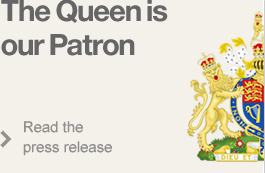Henry de Bohun, Earl of Hereford, was a member of the Essex-based family grouping brought to the rebel cause by kinship with Geoffrey de Mandeville and Robert FitzWalter. Henry’s family also held important blocks of lands in the west of England and the Welsh Marches.
Henry (c. 1175-1220) was the son of Humphrey de Bohun (d. 1181) and Margaret (d. 1201), daughter of Henry, earl of Northumberland, and widow of Conan IV, duke of Brittany. His grandmother was Margaret de Bohun, the daughter of Miles of Gloucester, earl of Hereford, one of the earliest and most consistent supporters of the Empress Matilda in the civil war of King Stephen’s reign. Margaret brought to the de Bohuns her family’s claims to the royal constableship and to the earldom of Hereford. The constable’s office had been granted to her son – Henry’s father – before 1174 and was therefore inherited by Henry himself, who used the style ‘Henry the Constable’ in a number of his early charters. Despite his youth he occasionally attested charters of Richard I and was one of the king’s sureties in negotiations with the count of Flanders in 1197.
John bestowed the title earl of Hereford on Henry in 1200, though at the same time prohibiting him from staking any claim to the generous grants which Henry II had made in a charter to his ancestor Earl Roger of Hereford. His grandmother’s advocacy had been a factor in this success, but equally significant was the fact that his mother was a granddaughter of David I, king of Scotland, and his uncle was William the Lion, a later king of the same country. Between 1204 and 1211 Henry was engaged in a lengthy dispute to establish his claim to a part of his mother’s dower lands, the valuable lordship of Ryhall in Rutland. No sooner had this dispute been settled than he found himself dragged into yet further litigation, countering a claim by the king’s half-brother, William Longespée, earl of Salisbury, to his lordship of Trowbridge (Wilts.) on the pretext of descent from an earlier owner, Edward of Salisbury. This immensely long drawn-out dispute was to lead to a sharp deterioration in his relations with King John. Longespée initiated the legal action in1212, and Earl Henry responded by resort to the time-wasting tactics characteristic of the time, pleading illness as an excuse for absence from hearings. As such an excuse was inadmissible in this sort of case, the king took the lordship into his own hands, while allowing Longespée to levy scutage (money in lieu of military service) from its tenants. The sense of hurt which Earl Henry felt was a major factor in his support for the rebels in 1215, as John’s seizure of the lordship constituted a disseisin made ‘unjustly and without judgement’, in the wording used in clause 39 of the Charter. A further claim on his allegiance was made by the ties of kinship: his wife was Maud, daughter of Geoffrey FitzPeter and therefore sister of Geoffrey de Mandeville. By virtue of his involvement on the rebel side in 1215 he secured the restoration of the territorial lordship, although not of the castle, of Trowbridge. Letters ordering the estate’s restitution to him were among the first to be issued in 1215 in execution of the Charter. The dispute continued to splutter on, however, and a final settlement was not reached until 1229, when Edward of Salisbury’s estates were divided equally between the claimants, the castle and manor of Trowbridge itself going to the Countess Ela, Longespée’s widow.
On the death of King John, Earl Henry remained loyal to the rebel cause and he was taken prisoner with the other rebel leaders at the battle of Lincoln in May 1217. As part of the general settlement in September he made his peace with the Minority government, subsequently attending the young Henry III’s court, receiving the earl’s third penny of Herefordshire and accounting for scutage. He died on pilgrimage to the Holy Land on 1 June 1220, leaving a son and heir, Humphrey. His widow took as her second husband, sometime between 1221 and 1226, one Sir Roger de Dauntsey and succeeded in her own right to the earldom of Essex, which on her death was inherited by her son.
Earl Henry was buried in the chapter house of Llanthony priory, near Gloucester, the traditional burial place of the de Bohun family. He was succeeded in the title by his son, Humphrey, who was to live until 1275.
Earl Henry was a notable figure in the development of modern Trowbridge, as it was he who in 1200 secured from King John the grant of a market and annual fair there. From this privilege flowed the laying out of the market place along the curved line of the castle ditch, the removal of the church from the castle’s inner bailey and the construction of the present church of St James in the heart of the town. It is likely that the earl’s considerable investment in Trowbridge helps to explain his keenness to retain possession of the place in the face of William Longespée’s persistent claims.
By Professor Nigel Saul, Royal Holloway, University of London.
Featured Article
Rex no potest peccare (The King can do no wrong). How many of you have read Unbroken, the bestseller by Laura Hillenbrand about Olympic runner Louis Zamperini ‘s experiences in World War II? Perhaps ...
Read on...Recent Articles
- Magna Carta's American Adventure
- 800th anniversary of Bristol...
- Bristol 800 concert and...
- Emancipation and Magna Carta
- Terrorism and Tolerance -...
- Magna Carta
- Magna Carta Benches mark...
- ABA Magna Carta Memorial...
Stay updated
If you would like to keep informed about the work of the Magna Carta Trust and our partners, please sign up to the newsletter below.
Become a Supporter
There are a number of significant supporter opportunities. Register your interest early to ensure the widest range of options.
Find out more




